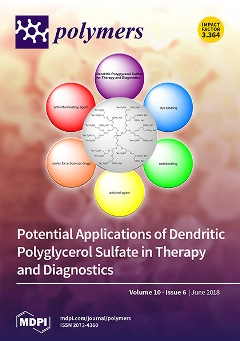Four new metal–organic coordination polymers [Cu(L)(mpa)]·3H
2O (
1), [Co(L)(mpa)]·H
2O (
2), [Zn(L)(mpa)]·H
2O (
3), and [Cd(L)(mpa)(H
2O)]·H
2O (
4) were synthesized by reactions of the corresponding metal(II) salts based on mixed ligands of 1,4-di(1
H-imidazol-4-yl)benzene (L) and 4-methylphthalic acid (H
2mpa), respectively. The structures of the complexes were characterized by elemental analysis, FT-IR spectroscopy, and single-crystal X-ray diffraction. Compound
1 exhibits a binodal 4-connected three dimensional (3D) architecture with (6
5·8)-
CdSO4 topology, while complexes
2 and
3 are isostructural and have two-dimensional (2D) layer structure with (4, 4)
sql topology based on the binuclear metal subunits. Complex
4 has the same 2D layer structure with (4, 4)
sql topology as complexes
2 and
3, but the inclined interpenetration of parallel sets of layers result in the formation with 2D + 2D → 3D framework. The activated sample
1 shows selective CO
2 uptake over N
2. The photoluminiscent properties together with quantum yield (QY) and luminescence lifetime are also investigated for complexes
3 and
4 in the solid state at room temperature.
Full article






